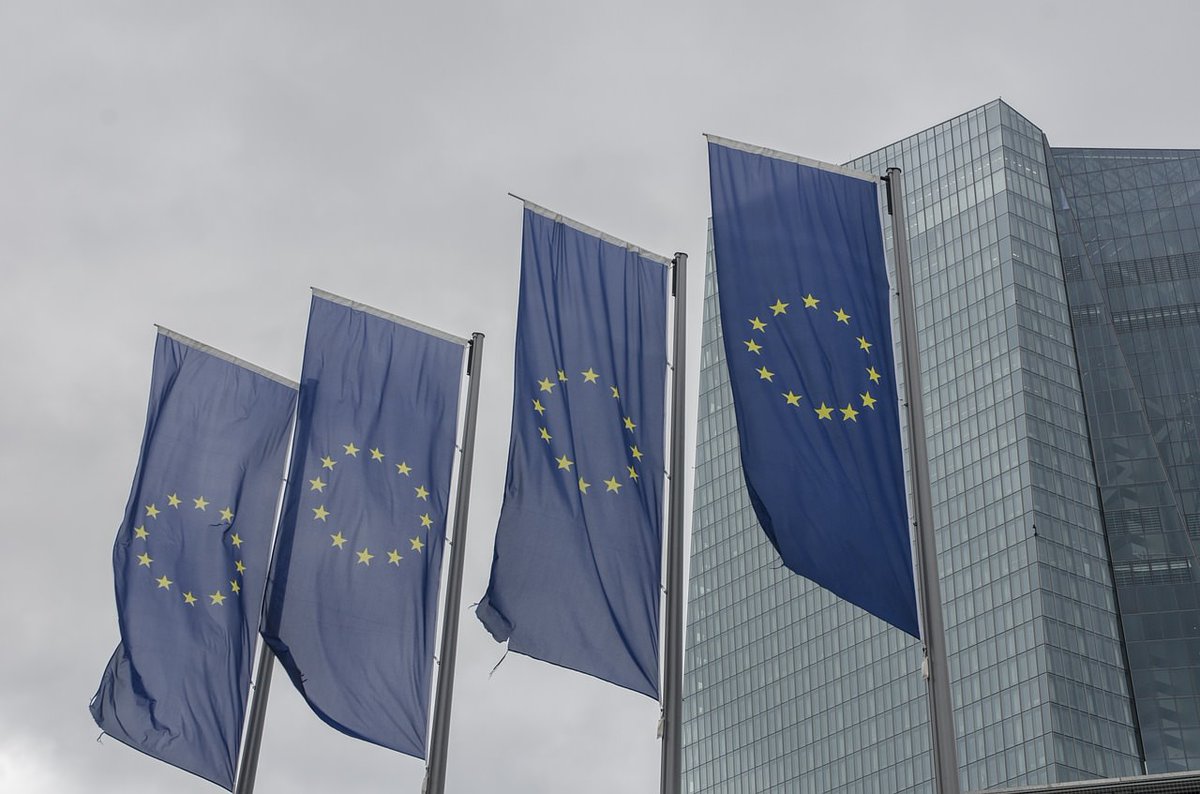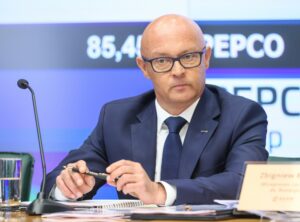There is a heated debate in the EU on the role of nuclear power in the energy transition in the coming years. The European Commission is demanding a smaller share of nuclear power, but a coalition of pro-nuclear states, including Poland and France, may undermine this plan – writes Maciej Burny from Enerxperience in BiznesAlert.pl.
- Brussels increasingly supports the development of small atomic technology, which materialized in the European Commission establishing an industrial alliance for small modular reactors to facilitate and accelerate the development, demonstration and implementation of SMRs in Europe by the early 2030s.
- Regarding the policy of financing energy projects by the European Investment Bank, the main center of resistance for financing the atom is the largest EU payer – Germany.
- The European Commission will seek to reduce the share of nuclear power in 2040-50, but these plans may be hampered by Poland and France, which have ambitious plans for the development of the atom.
New deal at the EIB
The recent appointment of Nadia Calviño from Spain as the new head of the European Investment Bank (EIB) is a good time to review recent developments in the debate on EU funding for nuclear energy.
When taking over, Calviño, who owes much of her position to the support of pro-nuclear countries, stressed her openness to future funding for small modular reactors (SMRs), which should open a new front in the debate on nuclear support at EU level.
The road to the EU’s atomic coffers runs through SMRs
In her remarks, the new president avoided talking about the reversal of the EIB’s policy in the context of financing large nuclear power plants, but the issue of financing the atom will certainly be tested by the pro-nuclear states in the bank’s forum, starting with the SMRs.
The opportunity is all the better because Brussels is increasingly supporting the development of small atom technology, which has been reflected in the European Commission establishing an industrial alliance for small modular reactors. Its aim is to facilitate and accelerate the development, demonstration and implementation of SMRs in Europe by the early 2030s.
It seems natural that tangible financial means should be behind this alliance, but anti-nuclear countries are not enthusiastic, because they are afraid that this will be a „foot in the door” to opening the EU budget to large-scale power plants.
Decarbonization without nuclear power stands no chance
The question of financing the atom from the European budget resembles the paradox of „Catch 22” from the cult novel by Joseph Heller. On the issue of nuclear energy, we know that we will not achieve cost-effective decarbonisation without this technology, but we cannot commit to support it in order to achieve our goals.
In the case of the policy of financing energy projects by the European Investment Bank, the main center of resistance for financing the atom is the largest EU payer – Germany. The new head’s positive stance on SMR financing alone may not be sufficient, as decisions on mobilising the bank’s resources are taken by the EIB Board of Directors. The Board of Directors makes decisions formally by a majority vote without the need for consensus, however, the bank in practice takes into account the position of the main payers in particular and tries not to adopt solutions directly contrary to their interests. As a result, although the current EIB lending criteria allow financing of nuclear technologies, in practice the bank does not finance any nuclear projects except for those that safeguard the operation of existing power plants.
At the same time, France and other pro-nuclear countries, including Poland, continue their efforts at the EU Council to open the EU’s coffers to the atom. On March 4, another meeting of ministers from the nuclear coalition will take place on the sidelines of the EU Energy Council, which will discuss the inclusion of SMRs in the list of important projects of common interest focused on the support of new technologies.
In the center or on the sidelines of the transition?
The atomic allies will definitely discuss the role of nuclear energy in achieving the long-term CO2 emission reduction goals for 2040 and 050. In its latest assessment of the impact of the target of a 90% reduction in emissions by 2040 compared to 1990, Brussels has shown that the role of the atom in the EU energy mix will decrease, and the installed capacity of these power plants in 2040 and 2050 will be at about 70 GW, which means it will drop by about 30% compared to the current state. This is in stark contrast to the assumptions set out in the declaration of the states of the nuclear alliance, also signed by Poland in Paris last year, in which the signatories pledged to develop up to 150 GW of atomic-based power by 2050. This is more than twice the European Commission’s target.
According to the declaration, this represents the equivalent of between 30 and 45 new large and small reactors in the EU, which would ensure that the current share of nuclear energy of 25 per cent in electricity production in the community is maintained.
In 2050, according to Brussels, the atom is expected to participate in energy generation at 7 percent only. In further discussions on the 2040 reduction target, we can certainly expect an intense debate on the significant discrepancy between these assumptions.
Can we change the paradigm of climate policy?
In this context, the effectiveness of France’s efforts to win the support of other countries for a fundamental change in the strategic approach to achieving the EU’s emission reduction targets will be crucial.
Paris wants to take advantage of the current debate on the 2040 target to revise EU Climate Law and instead of adopting another revision of the renewable energy directive, proposes a new „low-carbon” directive that would equalize regulatory, market and financial facilitations for nuclear energy with those provided for years for RES. This is supposed to be a new opening in the EU debate after the elections to the European Parliament and in the new term of Office of the European Commission.
A big test of the feasibility of this concept is the current discussion between the European Commission and Paris in the context of presenting the French contribution to the EU’s renewable energy target by 2030. In their national plan for climate and energy, the French refuse to set a specific goal for increasing the share of RES, assuming that ambitious actions in this area stand in position to a power generation industry based on nuclear power.
In the latest instalment of the dispute, the European Commission has asked the French government to set out in a revised national plan a target of at least 44 per cent of RES in final energy consumption by 2030, as Brussels believes this is Paris’s real potential in this area. However, the renewable energy directive does not impose mandatory targets on countries for the development of these technologies, and the target is mandatory only at community level. So the French can theoretically say – „we just not gonna do it”.
Poland and France could bring back the atom
The upcoming debate on changing the strategic approach to nuclear energy will also be of key importance for the Polish atomic development programme and we expect strong cooperation on the Warsaw-Paris line in this area. This dialogue will be reinforced by a broader coalition of pro-nuclear states, which now appears to be growing stronger. At stake are regulations potentially facilitating the functioning of nuclear energy, bankrolling new projects, and further changes in the energy market model aimed at a symbiosis of RES with the atom in the long term.









